HSBC 2008 Annual Report Download - page 64
Download and view the complete annual report
Please find page 64 of the 2008 HSBC annual report below. You can navigate through the pages in the report by either clicking on the pages listed below, or by using the keyword search tool below to find specific information within the annual report.-
 1
1 -
 2
2 -
 3
3 -
 4
4 -
 5
5 -
 6
6 -
 7
7 -
 8
8 -
 9
9 -
 10
10 -
 11
11 -
 12
12 -
 13
13 -
 14
14 -
 15
15 -
 16
16 -
 17
17 -
 18
18 -
 19
19 -
 20
20 -
 21
21 -
 22
22 -
 23
23 -
 24
24 -
 25
25 -
 26
26 -
 27
27 -
 28
28 -
 29
29 -
 30
30 -
 31
31 -
 32
32 -
 33
33 -
 34
34 -
 35
35 -
 36
36 -
 37
37 -
 38
38 -
 39
39 -
 40
40 -
 41
41 -
 42
42 -
 43
43 -
 44
44 -
 45
45 -
 46
46 -
 47
47 -
 48
48 -
 49
49 -
 50
50 -
 51
51 -
 52
52 -
 53
53 -
 54
54 -
 55
55 -
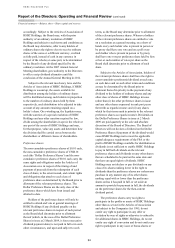 56
56 -
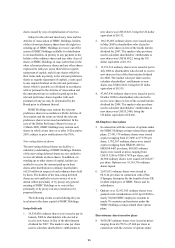 57
57 -
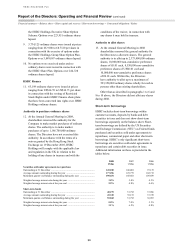 58
58 -
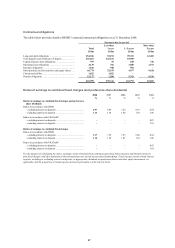 59
59 -
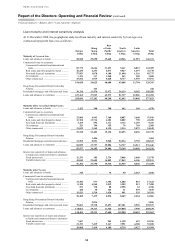 60
60 -
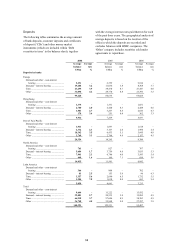 61
61 -
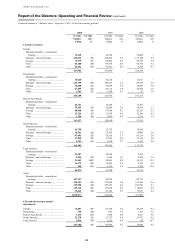 62
62 -
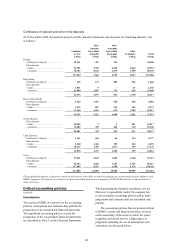 63
63 -
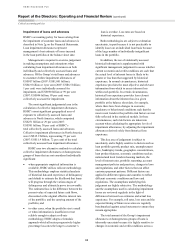 64
64 -
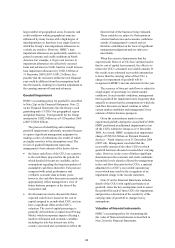 65
65 -
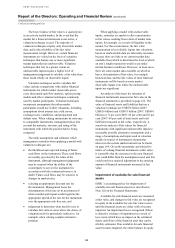 66
66 -
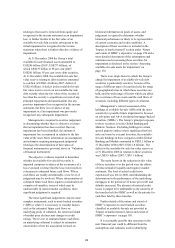 67
67 -
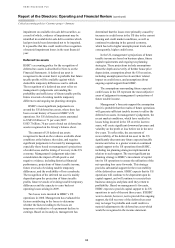 68
68 -
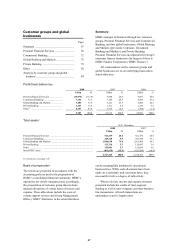 69
69 -
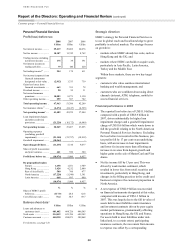 70
70 -
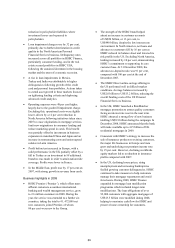 71
71 -
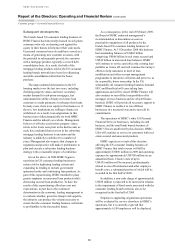 72
72 -
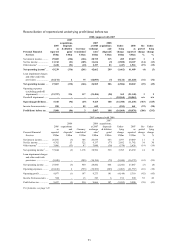 73
73 -
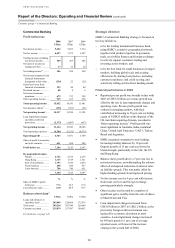 74
74 -
 75
75 -
 76
76 -
 77
77 -
 78
78 -
 79
79 -
 80
80 -
 81
81 -
 82
82 -
 83
83 -
 84
84 -
 85
85 -
 86
86 -
 87
87 -
 88
88 -
 89
89 -
 90
90 -
 91
91 -
 92
92 -
 93
93 -
 94
94 -
 95
95 -
 96
96 -
 97
97 -
 98
98 -
 99
99 -
 100
100 -
 101
101 -
 102
102 -
 103
103 -
 104
104 -
 105
105 -
 106
106 -
 107
107 -
 108
108 -
 109
109 -
 110
110 -
 111
111 -
 112
112 -
 113
113 -
 114
114 -
 115
115 -
 116
116 -
 117
117 -
 118
118 -
 119
119 -
 120
120 -
 121
121 -
 122
122 -
 123
123 -
 124
124 -
 125
125 -
 126
126 -
 127
127 -
 128
128 -
 129
129 -
 130
130 -
 131
131 -
 132
132 -
 133
133 -
 134
134 -
 135
135 -
 136
136 -
 137
137 -
 138
138 -
 139
139 -
 140
140 -
 141
141 -
 142
142 -
 143
143 -
 144
144 -
 145
145 -
 146
146 -
 147
147 -
 148
148 -
 149
149 -
 150
150 -
 151
151 -
 152
152 -
 153
153 -
 154
154 -
 155
155 -
 156
156 -
 157
157 -
 158
158 -
 159
159 -
 160
160 -
 161
161 -
 162
162 -
 163
163 -
 164
164 -
 165
165 -
 166
166 -
 167
167 -
 168
168 -
 169
169 -
 170
170 -
 171
171 -
 172
172 -
 173
173 -
 174
174 -
 175
175 -
 176
176 -
 177
177 -
 178
178 -
 179
179 -
 180
180 -
 181
181 -
 182
182 -
 183
183 -
 184
184 -
 185
185 -
 186
186 -
 187
187 -
 188
188 -
 189
189 -
 190
190 -
 191
191 -
 192
192 -
 193
193 -
 194
194 -
 195
195 -
 196
196 -
 197
197 -
 198
198 -
 199
199 -
 200
200 -
 201
201 -
 202
202 -
 203
203 -
 204
204 -
 205
205 -
 206
206 -
 207
207 -
 208
208 -
 209
209 -
 210
210 -
 211
211 -
 212
212 -
 213
213 -
 214
214 -
 215
215 -
 216
216 -
 217
217 -
 218
218 -
 219
219 -
 220
220 -
 221
221 -
 222
222 -
 223
223 -
 224
224 -
 225
225 -
 226
226 -
 227
227 -
 228
228 -
 229
229 -
 230
230 -
 231
231 -
 232
232 -
 233
233 -
 234
234 -
 235
235 -
 236
236 -
 237
237 -
 238
238 -
 239
239 -
 240
240 -
 241
241 -
 242
242 -
 243
243 -
 244
244 -
 245
245 -
 246
246 -
 247
247 -
 248
248 -
 249
249 -
 250
250 -
 251
251 -
 252
252 -
 253
253 -
 254
254 -
 255
255 -
 256
256 -
 257
257 -
 258
258 -
 259
259 -
 260
260 -
 261
261 -
 262
262 -
 263
263 -
 264
264 -
 265
265 -
 266
266 -
 267
267 -
 268
268 -
 269
269 -
 270
270 -
 271
271 -
 272
272 -
 273
273 -
 274
274 -
 275
275 -
 276
276 -
 277
277 -
 278
278 -
 279
279 -
 280
280 -
 281
281 -
 282
282 -
 283
283 -
 284
284 -
 285
285 -
 286
286 -
 287
287 -
 288
288 -
 289
289 -
 290
290 -
 291
291 -
 292
292 -
 293
293 -
 294
294 -
 295
295 -
 296
296 -
 297
297 -
 298
298 -
 299
299 -
 300
300 -
 301
301 -
 302
302 -
 303
303 -
 304
304 -
 305
305 -
 306
306 -
 307
307 -
 308
308 -
 309
309 -
 310
310 -
 311
311 -
 312
312 -
 313
313 -
 314
314 -
 315
315 -
 316
316 -
 317
317 -
 318
318 -
 319
319 -
 320
320 -
 321
321 -
 322
322 -
 323
323 -
 324
324 -
 325
325 -
 326
326 -
 327
327 -
 328
328 -
 329
329 -
 330
330 -
 331
331 -
 332
332 -
 333
333 -
 334
334 -
 335
335 -
 336
336 -
 337
337 -
 338
338 -
 339
339 -
 340
340 -
 341
341 -
 342
342 -
 343
343 -
 344
344 -
 345
345 -
 346
346 -
 347
347 -
 348
348 -
 349
349 -
 350
350 -
 351
351 -
 352
352 -
 353
353 -
 354
354 -
 355
355 -
 356
356 -
 357
357 -
 358
358 -
 359
359 -
 360
360 -
 361
361 -
 362
362 -
 363
363 -
 364
364 -
 365
365 -
 366
366 -
 367
367 -
 368
368 -
 369
369 -
 370
370 -
 371
371 -
 372
372 -
 373
373 -
 374
374 -
 375
375 -
 376
376 -
 377
377 -
 378
378 -
 379
379 -
 380
380 -
 381
381 -
 382
382 -
 383
383 -
 384
384 -
 385
385 -
 386
386 -
 387
387 -
 388
388 -
 389
389 -
 390
390 -
 391
391 -
 392
392 -
 393
393 -
 394
394 -
 395
395 -
 396
396 -
 397
397 -
 398
398 -
 399
399 -
 400
400 -
 401
401 -
 402
402 -
 403
403 -
 404
404 -
 405
405 -
 406
406 -
 407
407 -
 408
408 -
 409
409 -
 410
410 -
 411
411 -
 412
412 -
 413
413 -
 414
414 -
 415
415 -
 416
416 -
 417
417 -
 418
418 -
 419
419 -
 420
420 -
 421
421 -
 422
422 -
 423
423 -
 424
424 -
 425
425 -
 426
426 -
 427
427 -
 428
428 -
 429
429 -
 430
430 -
 431
431 -
 432
432 -
 433
433 -
 434
434 -
 435
435 -
 436
436 -
 437
437 -
 438
438 -
 439
439 -
 440
440 -
 441
441 -
 442
442 -
 443
443 -
 444
444 -
 445
445 -
 446
446 -
 447
447 -
 448
448 -
 449
449 -
 450
450 -
 451
451 -
 452
452 -
 453
453 -
 454
454 -
 455
455 -
 456
456 -
 457
457 -
 458
458 -
 459
459 -
 460
460 -
 461
461 -
 462
462 -
 463
463 -
 464
464 -
 465
465 -
 466
466 -
 467
467 -
 468
468 -
 469
469 -
 470
470 -
 471
471 -
 472
472
 |
 |

HSBC HOLDINGS PLC
Report of the Directors: Operating and Financial Review (continued)
Critical accounting policies
62
Impairment of loans and advances
HSBC’s accounting policy for losses arising from
the impairment of customer loans and advances is
described in Note 2g on the Financial Statements.
Loan impairment allowances represent
management’s best estimate of losses incurred
in the loan portfolios at the balance sheet date.
Management is required to exercise judgement
in making assumptions and estimations when
calculating loan impairment allowances on both
individually and collectively assessed loans and
advances. Of the Group’s total loans and advances
to customers before impairment allowances of
US$957 billion (2007: US$1,001 billion),
US$6.9 billion or 1 per cent (2007: US$6.5 billion;
1 per cent) were individually assessed for
impairment, and US$950 billion or 99 per cent
(2007: US$994 billion; 99 per cent) were
collectively assessed for impairment.
The most significant judgemental area is the
calculation of collective impairment allowances.
HSBC’s most significant geographical area of
exposure to collectively assessed loans and
advances is North America, which comprised
US$271 billion or 29 per cent (2007:
US$301 billion; 30 per cent) of HSBC’s
total collectively assessed loans and advances.
Collective impairment allowances in North America
were US$15.9 billion, representing 77 per cent
(2007: US$11.9 billion; 72 per cent) of the total
collectively assessed loan impairment allowance.
HSBC uses two alternative methods to calculate
collective impairment allowances on homogeneous
groups of loans that are not considered individually
significant:
• when appropriate empirical information is
available, HSBC utilises roll-rate methodology.
This methodology employs statistical analysis
of historical data and experience of delinquency
and default to estimate the likelihood that loans
will progress through the various stages of
delinquency and ultimately prove irrecoverable.
The estimated loss is the difference between the
present value of expected future cash flows,
discounted at the original effective interest rate
of the portfolio, and the carrying amount of the
portfolio; and
• in other cases, when the portfolio size is small
or when information is insufficient or not
reliable enough to adopt a roll-rate
methodology, HSBC adopts a formulaic
approach which allocates progressively higher
percentage loss rates the longer a customer’s
loan is overdue. Loss rates are based on
historical experience.
Both methodologies are subject to estimation
uncertainty, in part because it is not practicable to
identify losses on an individual loan basis because
of the large number of individually insignificant
loans in the portfolio.
In addition, the use of statistically assessed
historical information is supplemented with
significant management judgement to assess whether
current economic and credit conditions are such that
the actual level of inherent losses is likely to be
greater or less than that suggested by historical
experience. In normal circumstances, historical
experience provides the most objective and relevant
information from which to assess inherent loss
within each portfolio. In certain circumstances,
historical loss experience provides less relevant
information about the inherent loss in a given
portfolio at the balance sheet date, for example,
where there have been changes in economic,
regulatory or behavioural conditions such that the
most recent trends in the portfolio risk factors are not
fully reflected in the statistical models. In these
circumstances, such risk factors are taken into
account when calculating the appropriate levels of
impairment allowances, by adjusting the impairment
allowances derived solely from historical loss
experience.
This key area of judgement is subject to
uncertainty and is highly sensitive to factors such as
loan portfolio growth, product mix, unemployment
rates, bankruptcy trends, geographic concentrations,
loan product features, economic conditions such as
national and local trends in housing markets, the
level of interest rates, portfolio seasoning, account
management policies and practices, changes in laws
and regulations, and other factors that can affect
customer payment patterns. Different factors are
applied in different regions and countries to reflect
different economic conditions and laws and
regulations. The assumptions underlying this
judgement are highly subjective. The methodology
and the assumptions used in calculating impairment
losses are reviewed regularly in the light of
differences between loss estimates and actual loss
experience. For example, roll rates, loss rates and the
expected timing of future recoveries are regularly
benchmarked against actual outcomes to ensure they
remain appropriate.
The total amount of the Group’s impairment
allowances on homogeneous groups of loans is
inherently uncertain because it is highly sensitive to
changes in economic and credit conditions across a
